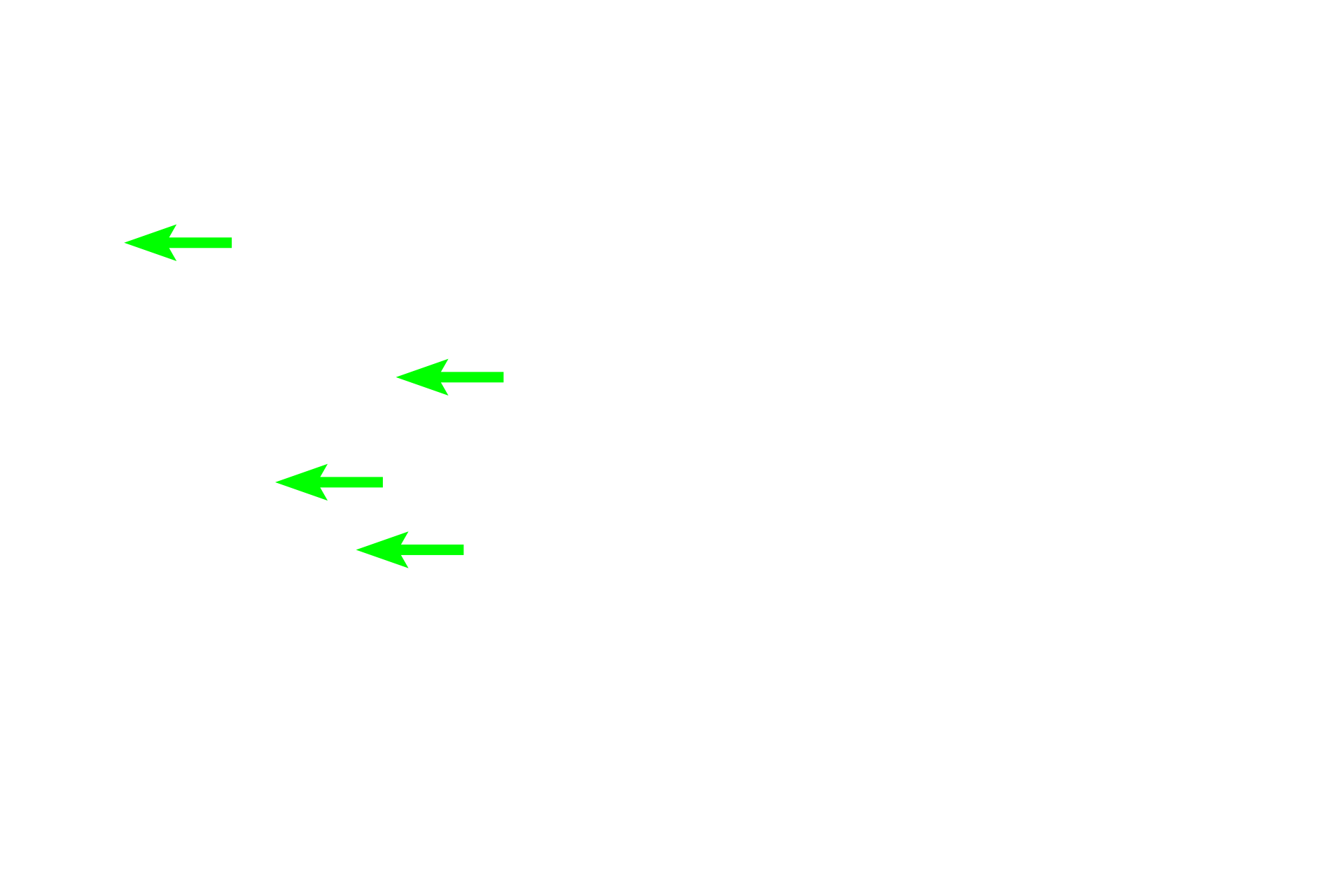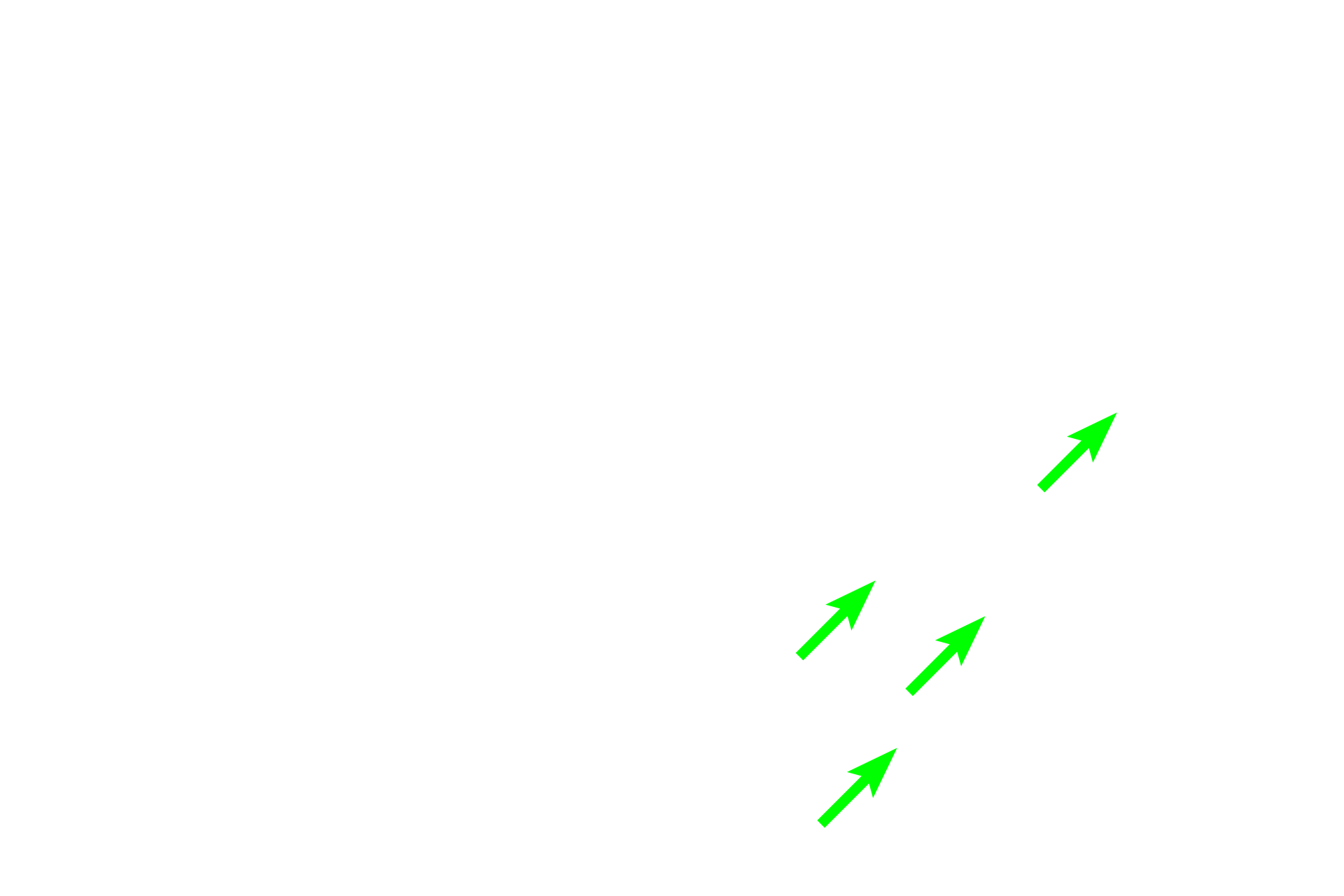
Plasma cell
Plasma cells differentiate from migratory B lymphocytes and reside in connective tissues. When located in mucosal connective tissue (lamina propria), as seen in this image, plasma cells mostly secrete IgA antibodies. In other regions of the body, plasma cells secrete IgG antibodies. Plasma cells are considered to have limited migratory ability. 400x, 1000x

Left panel >
An accumulation of plasma cells demonstrates two diagnostic features that help identify plasma cells. Heterochromatin frequently clumps around the periphery of the nucleus, forming a “clock face” appearance. Additionally, a pale-staining region in the cytoplasm adjacent to the nucleus indicates the position of the large Golgi apparatus. This region, referred to as a “negative Golgi” image, is surrounded by the more chromophilic, blue-staining, rough endoplasmic reticulum.

- Plasma cells
An accumulation of plasma cells demonstrates two diagnostic features that help identify plasma cells. Heterochromatin frequently clumps around the periphery of the nucleus, forming a “clock face” appearance. Additionally, a pale-staining region in the cytoplasm adjacent to the nucleus indicates the position of the large Golgi apparatus. This region, referred to as a “negative Golgi” image, is surrounded by the more chromophilic, blue-staining, rough endoplasmic reticulum.

-- Negative Golgi image
An accumulation of plasma cells demonstrates two diagnostic features that help identify plasma cells. Heterochromatin frequently clumps around the periphery of the nucleus, forming a “clock face” appearance. Additionally, a pale-staining region in the cytoplasm adjacent to the nucleus indicates the position of the large Golgi apparatus. This region, referred to as a “negative Golgi” image, is surrounded by the more chromophilic, blue-staining, rough endoplasmic reticulum.

- Mast cell
An accumulation of plasma cells demonstrates two diagnostic features that help identify plasma cells. Heterochromatin frequently clumps around the periphery of the nucleus, forming a “clock face” appearance. Additionally, a pale-staining region in the cytoplasm adjacent to the nucleus indicates the position of the large Golgi apparatus. This region, referred to as a “negative Golgi” image, is surrounded by the more chromophilic, blue-staining, rough endoplasmic reticulum.

- Intestinal glands
An accumulation of plasma cells demonstrates two diagnostic features that help identify plasma cells. Heterochromatin frequently clumps around the periphery of the nucleus, forming a “clock face” appearance. Additionally, a pale-staining region in the cytoplasm adjacent to the nucleus indicates the position of the large Golgi apparatus. This region, referred to as a “negative Golgi” image, is surrounded by the more chromophilic, blue-staining, rough endoplasmic reticulum.

Right panel >
A typical plasma cell is ovoid and has an eccentric nucleus with heterochromatin frequently arranged to form a clock face. A peripheral rim of cytoplasm stains purple with hematoxylin, due to the presence of rough endoplasmic reticulum. A “negative Golgi” image lies adjacent to the nucleus. These organelles indicate production of protein, antibodies in this case, for release by the cells. 1000x

- Plasma cells
A typical plasma cell is ovoid and has an eccentric nucleus with heterochromatin frequently arranged to form a clock face. A peripheral rim of cytoplasm stains purple with hematoxylin, due to the presence of rough endoplasmic reticulum. A “negative Golgi” image lies adjacent to the nucleus. These organelles indicate production of protein, antibodies in this case, for release by the cells. 1000x

-- Rough endoplasmic reticulum
A typical plasma cell is ovoid and has an eccentric nucleus with heterochromatin frequently arranged to form a clock face. A peripheral rim of cytoplasm stains purple with hematoxylin, due to the presence of rough endoplasmic reticulum. A “negative Golgi” image lies adjacent to the nucleus. These organelles indicate production of protein, antibodies in this case, for release by the cells. 1000x

-- Negative Golgi image
A typical plasma cell is ovoid and has an eccentric nucleus with heterochromatin frequently arranged to form a clock face. A peripheral rim of cytoplasm stains purple with hematoxylin, due to the presence of rough endoplasmic reticulum. A “negative Golgi” image lies adjacent to the nucleus. These organelles indicate production of protein, antibodies in this case, for release by the cells. 1000x

- Mast cell
A typical plasma cell is ovoid and has an eccentric nucleus with heterochromatin frequently arranged to form a clock face. A peripheral rim of cytoplasm stains purple with hematoxylin, due to the presence of rough endoplasmic reticulum. A “negative Golgi” image lies adjacent to the nucleus. These organelles indicate production of protein, antibodies in this case, for release by the cells. 1000x

- Eosinophil
A typical plasma cell is ovoid and has an eccentric nucleus with heterochromatin frequently arranged to form a clock face. A peripheral rim of cytoplasm stains purple with hematoxylin, due to the presence of rough endoplasmic reticulum. A “negative Golgi” image lies adjacent to the nucleus. These organelles indicate production of protein, antibodies in this case, for release by the cells. 1000x